Three hours of blowing bubbles among the coral reefs around Bocas del Toro gave me plenty of time to take in beautiful impressions of a rich ecosystem and questions about its long-term survival.
I’m not an expert on corals nor a marine biologist, but perhaps that isn’t a bad thing when I share with you some of my amateur enthusiast musings on my last day in Panama, which I visited for a week-long adventure for Seas Your Future with the Students without Borders Academy, the Institute for Tropical Ecology and Conservation and the tall ship Regina Maris.
The reefs in this part of Panama surrounded by seagrass meadows that flourish in silty white sediment. Approaching the shallows from our mooring buoy in around 6 – 7 m deep water, the first animals coming into view on relatively barren sediment are large sea cucumbers and orange cushion stars.
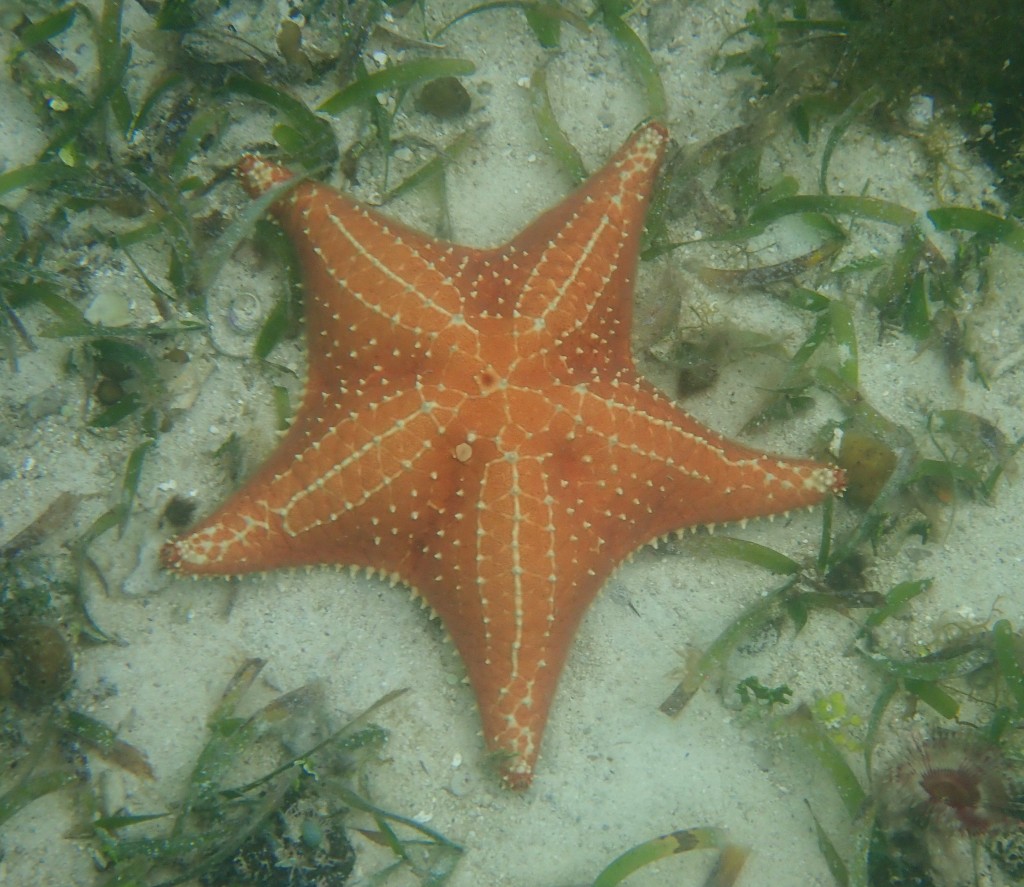
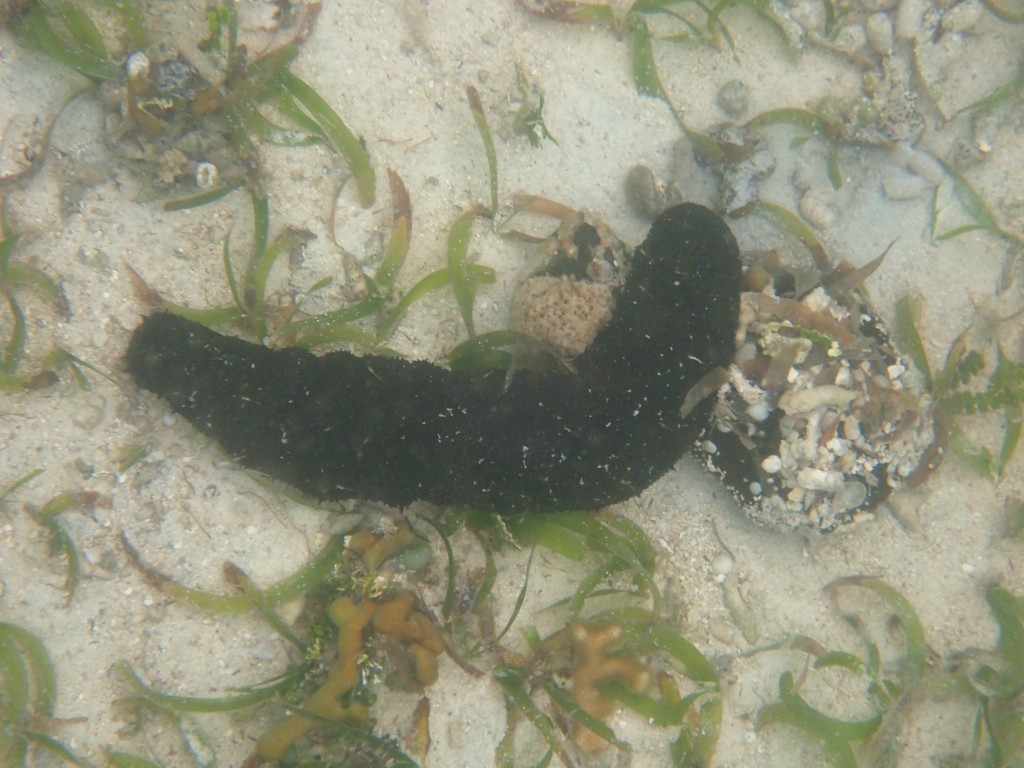
Cushion star and sea cucumber on silty sediment among seagrass at Bocas del Toro, Panama. (c) C Braungardt 2024.
In 3 – 4 m depth, denser seagrass meadows support more diverse fauna, including fish and, I assume, minute plankton they appear to pick off the vegetation. A fine layer of algae on the seagrass blades indicate nutrient-rich waters and I wonder about the balance in this ecosystem.
Esme, a marine biologist with links to the local branch of the Smithsonian Institute and Bocas Pirate Dive Centre, later told me of the importance of agriculture in the catchment and that the local sewage treatment is not working at the moment. In a semi-enclosed bay with only 30 – 50 cm tidal range, water exchange and the dispersal of nutrient from such sources are limited and the build-up of excess nutrients can have dire consequences for the ecosystem.
A little research provided part of the answer: in 2017, the Smithsonian Institute identified hypoxia, the depletion of oxygen in the water, as main cause for coral dying in deeper waters in Almirante Bay at Bocas del Toro. Oxygen depletion is one of a range of typical consequences of the over-fertilisation of water bodies (also called eutrophication) that, although not mentioned in the Smithsonian’s article, is likely to be a major threat in this location.
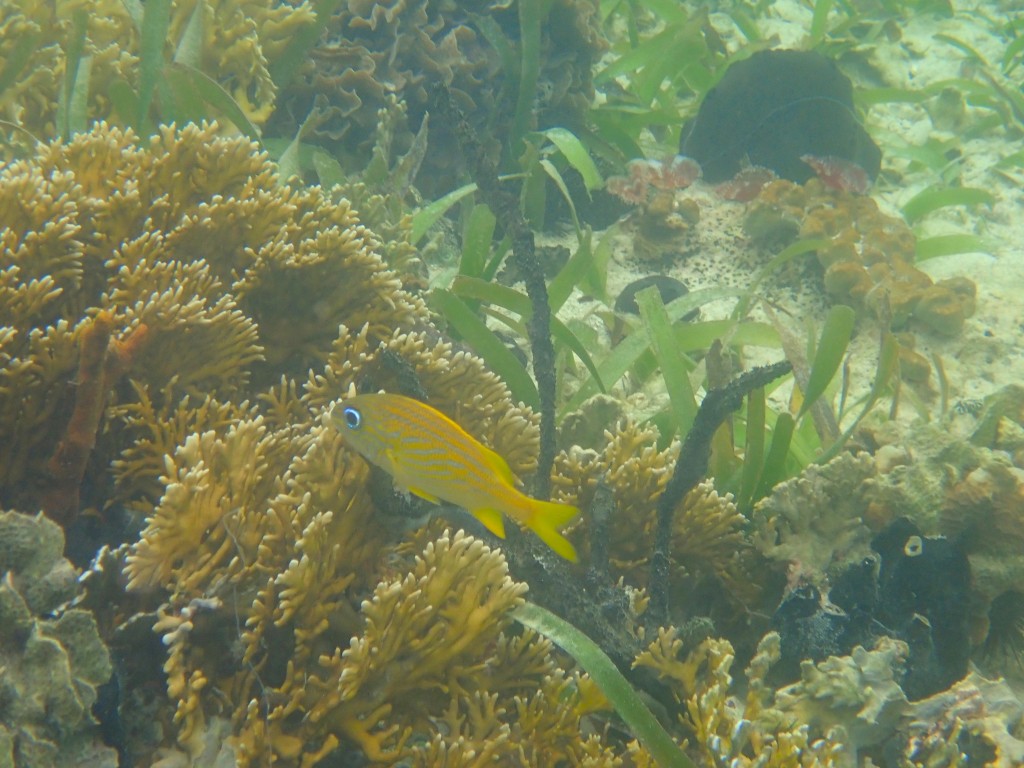
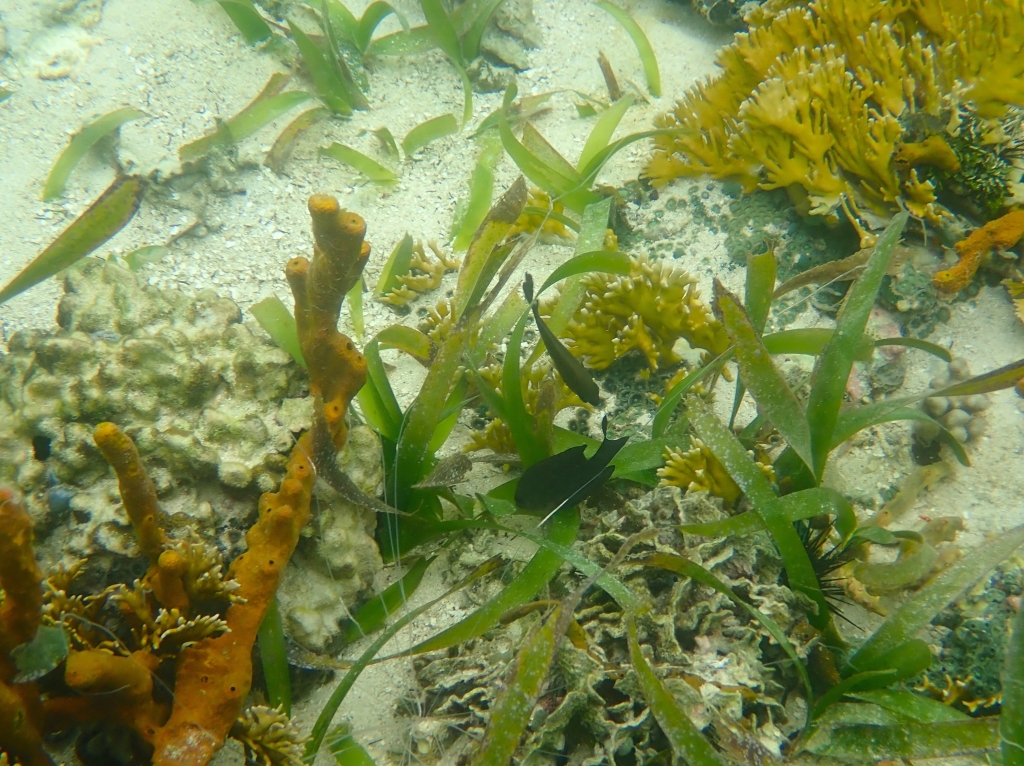
Seagrass and coral community at Bocas del Toro, Panama. (c) C Braungardt 2024.
Seagrass in itself is fascinating. As an angiosperm, seagrass is a flowering and seed-bearing plant with root, stem and leaves, rather than the holdfast and blade that defines macroalgae. Along with lilies, palms and grasses, seagrass belongs to the monocotyledons, originally evolved on land some 100,000 years ago and then found it’s niche in coastal seas. Seagrass meadows are important nurseries for many coastal and marine species, absorb nutrients, capture sediment, store carbon, stabilise sediment and generate oxygen. In short, they provide a multitude of ecosystem services, about which you can read in this excellent article by the Smithsonian Ocean Institute.
Perhaps it is thanks to the purifying action of the seagrass meadows and nearby mangroves, which provide a similarly large range of ecosystem services, that the visibility is reasonably good.
In one area where waters were quite murky, I found the source of turbidity to be millions of tiny fish of about 3 mm in size. I must have witnessed the result of a mass hatching event nearby! Watching these tiny creatures start out on their big ocean adventure fills me with awe and makes me wonder about their fate. It’s a little bit like sailing across the ocean in a tiny boat – and most boats feel tiny in that expanse – it just makes me feel very small, humbled and awestruck.
Just as I was getting carried away with my awe and wonder, I hear a deep, long, roaring sound to remind me of the pervasive pressures on every ecosystem: the second flight out of Bocas del Toro airport tears through the morning air above my snorkelling site a couple of hundred yards off the runway.
The transition to coral communities in the shallows is seamless, with stony corals emerging here and there among the seagrass before reef species in their great diversity take over. Some coral still show signs of coral bleaching events that took place due to high water temperatures last summer, but mostly, the community looks healthy.
The diversity of coral species at Bocas del Toro is great and many common coral names are very descriptive (e.g. elkhorn, staghorn, brain, pillar, finger, seafan and lettuce corals), while star corals have distinctive polyps with many ray-like tentacles. Colourful sponges in shades of yellow, green, yellow, red and black mingle among them.
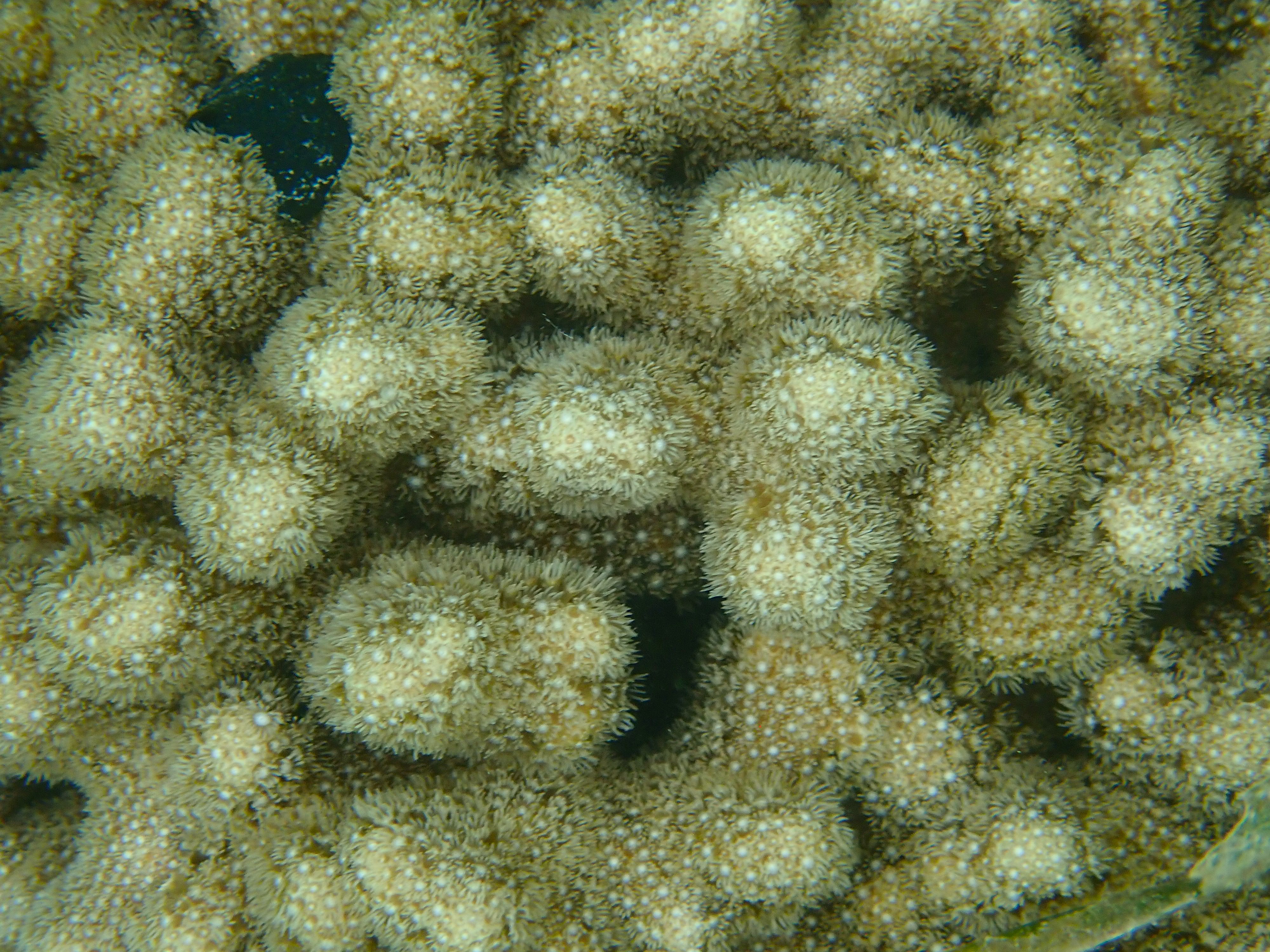


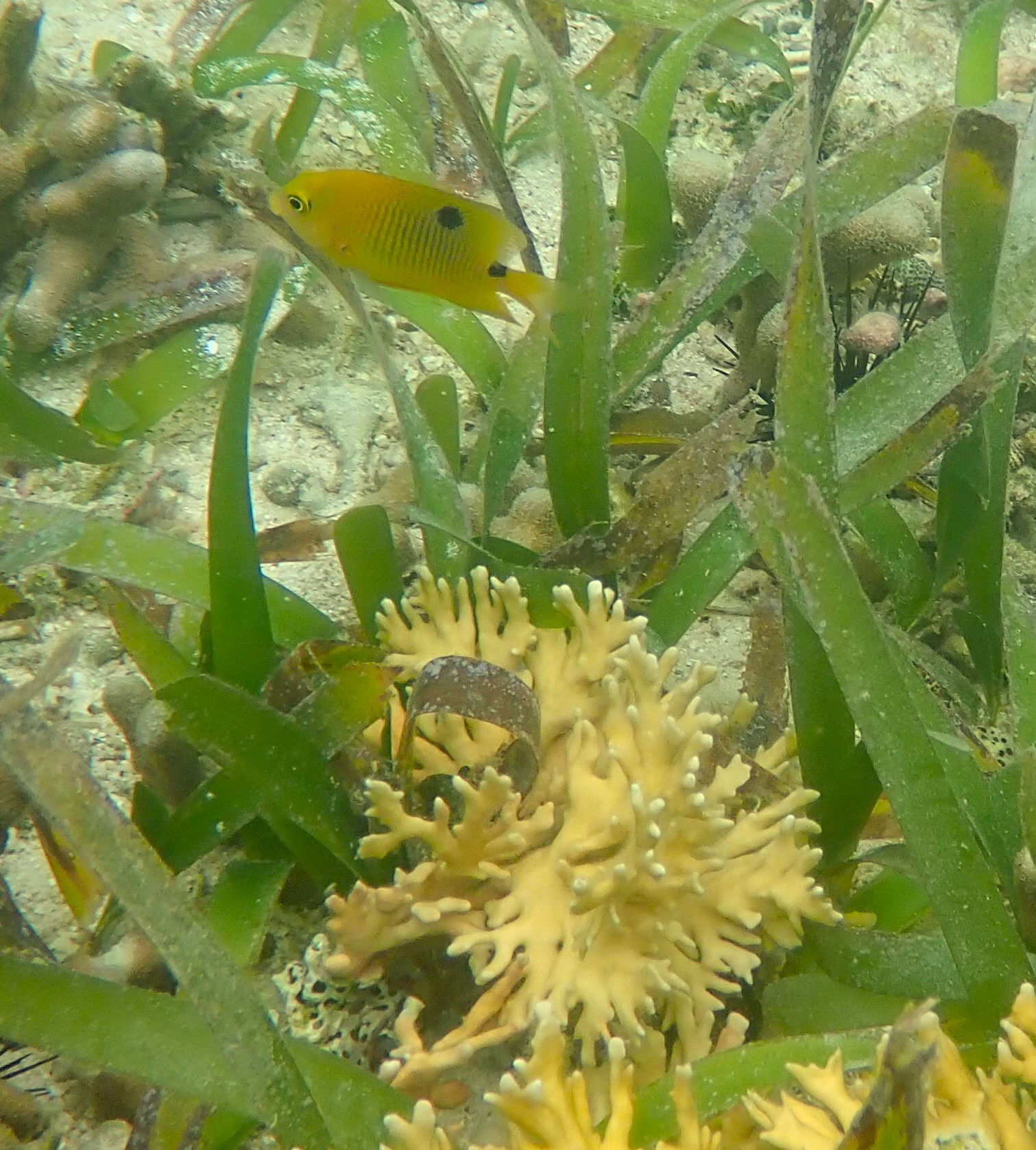
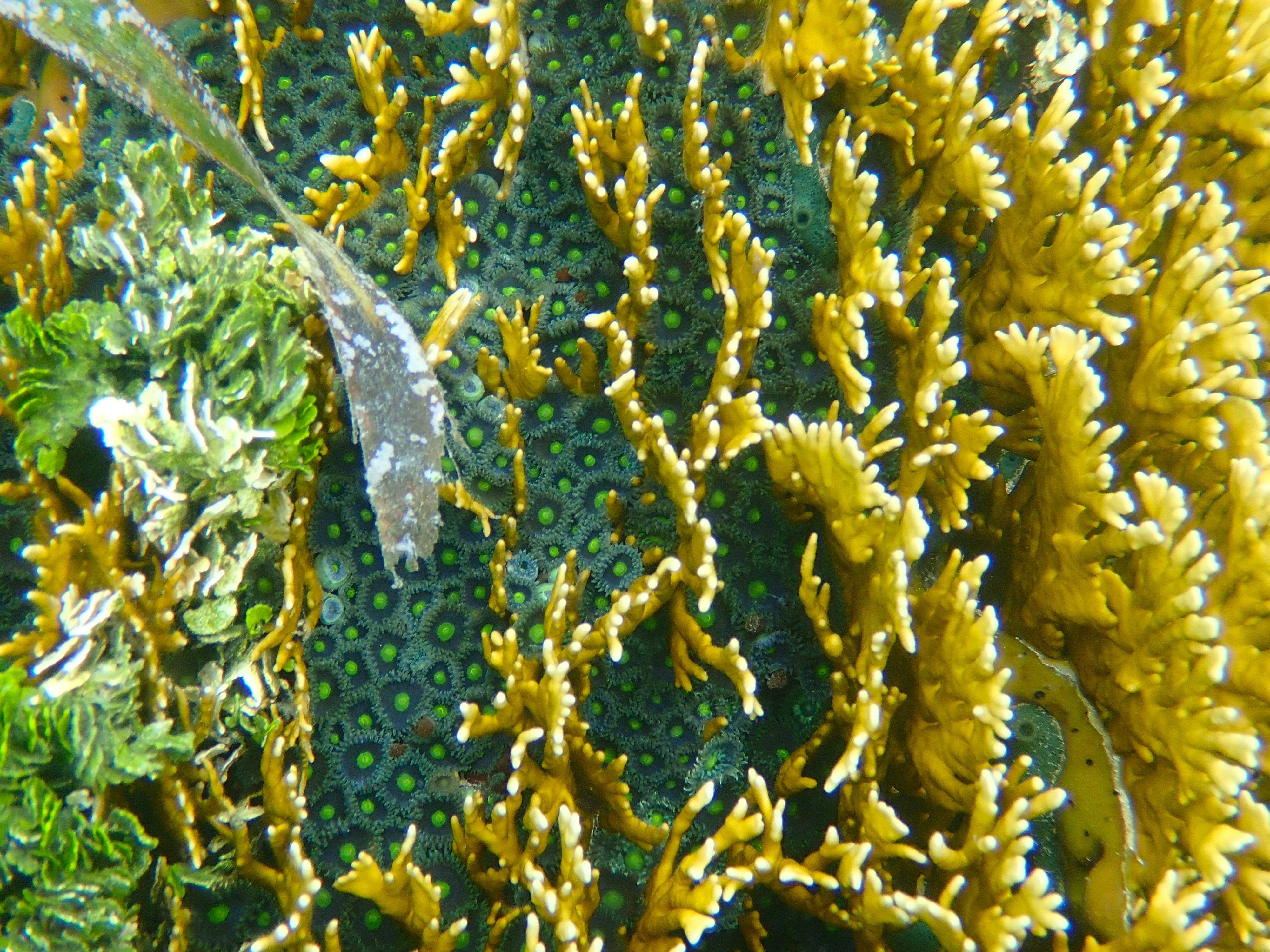

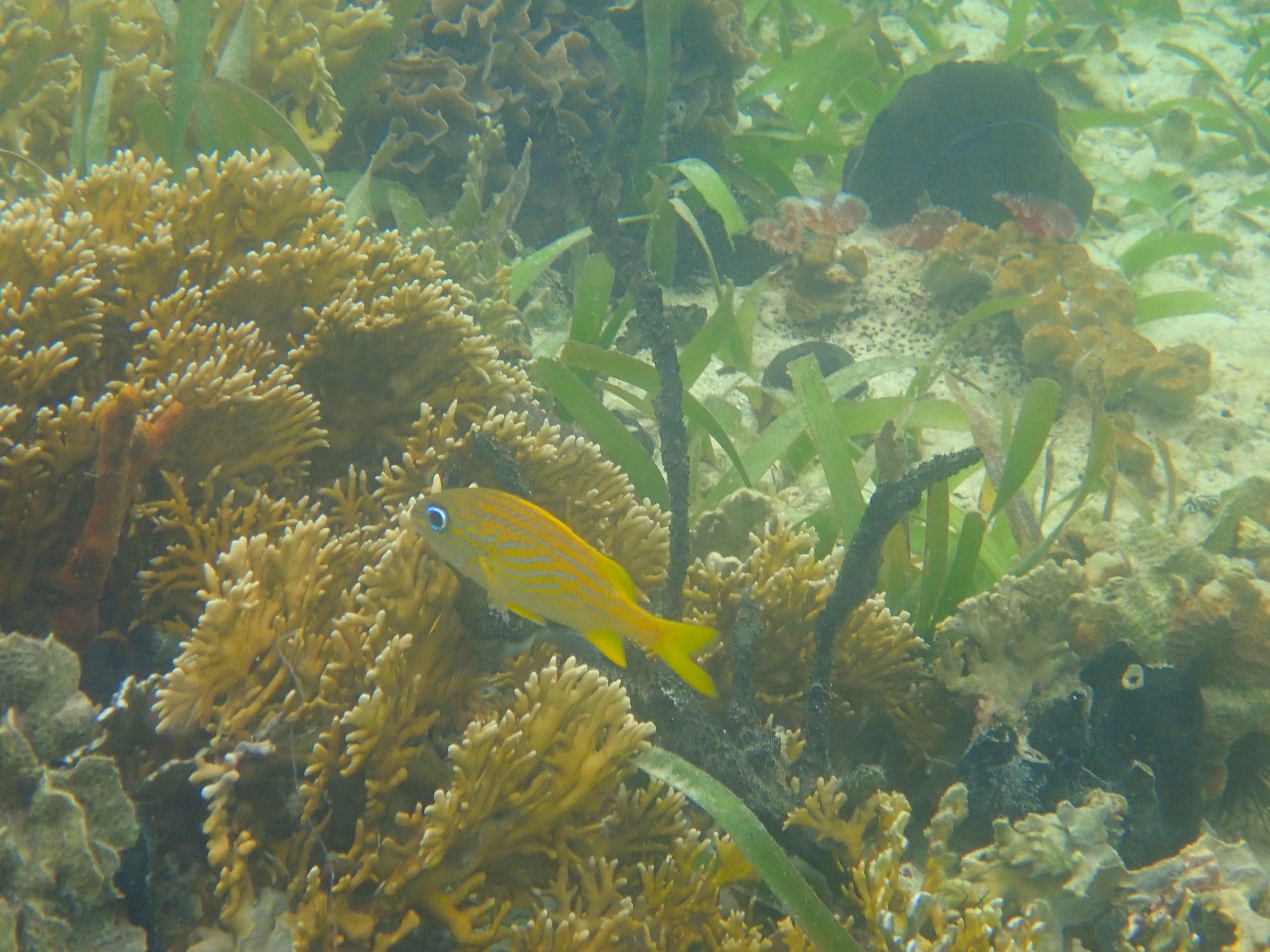

Corals at Bocas del Toro. Clockwise from top left: close-up of lobed-star coral, fish and fire coral among seagrass, brain coral, fish among fire coral, finger coral among fire coral and amber-coloured sponges, star coral among fire coral with calcareous seaweed on left margin, red and orange sponges among fire coral, sea pearl (unicellular algae) with lettuce coral and sponge.
What seems like quite a lot of single broken coral branches lie on the sea floor and occasionally, small mounds of dead coral fragments come into view. What force has collected them together? Or were these spots of destruction by man? Perhaps a place where an anchor caught hold, vandalism by tourists, some natural force or the grounding of a boat? Nevertheless, even here shoals of little grey fish feed on something invisible while some larger, more colourful interlopers try to claim their rights over it.
Elsewhere, I hover and watch as two individuals of an otherwise unassuming fish species fight with their mouths gaping wide open, revealing bright red interior designed to impress. Is it territory, mating rights, food or something else this squabble is about? It’s a true ‘Blue Planet‘ moment, although sadly David Attenborough is not with me to solve my puzzle.
I saw plenty of fish of many different species. Just when I thought “I must have seen every species of fish on this reef” I spotted yet another. But what do words, such as ‘plenty’ and ‘many’ mean without a reference point?
Let’s not ignore the other critters on the reef. Although I duck-dived to get closer, I didn’t see any small crustaceans or sea horses, although I’ve been assured that they are around. In addition, I didn’t want to damage tall towers of red and orange sponges, nor get in contact with long-spined sea urchins, so I kept a cautious distance.
Animals I did observe on the reef include a range of colourful sponges, the primitive but persistent, sessile animals that have been around for at least 600 million years. They are filter feeders and pump large quantities of water through their bodies, taking out bacteria, nutrient and particles and while feeding, also purify the water and contribute to the overall health of the coral reef. I was mesmerised by tube worms spreading their fans and brittle stars embracing pillar sponges like tinsel gone crazy.
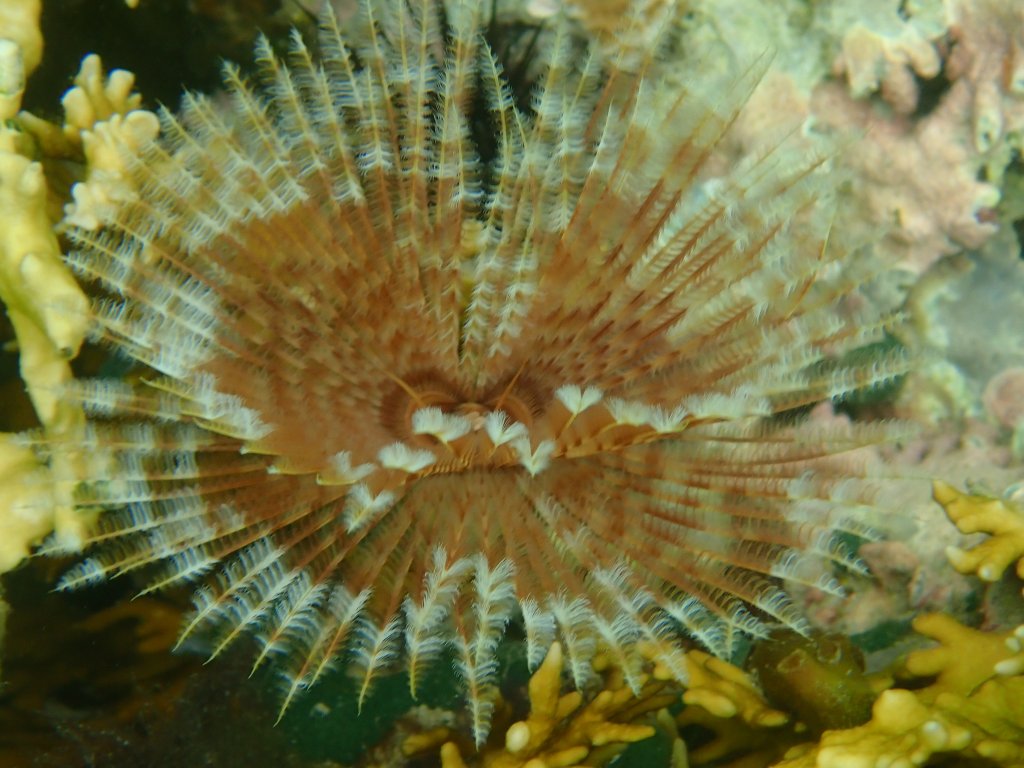
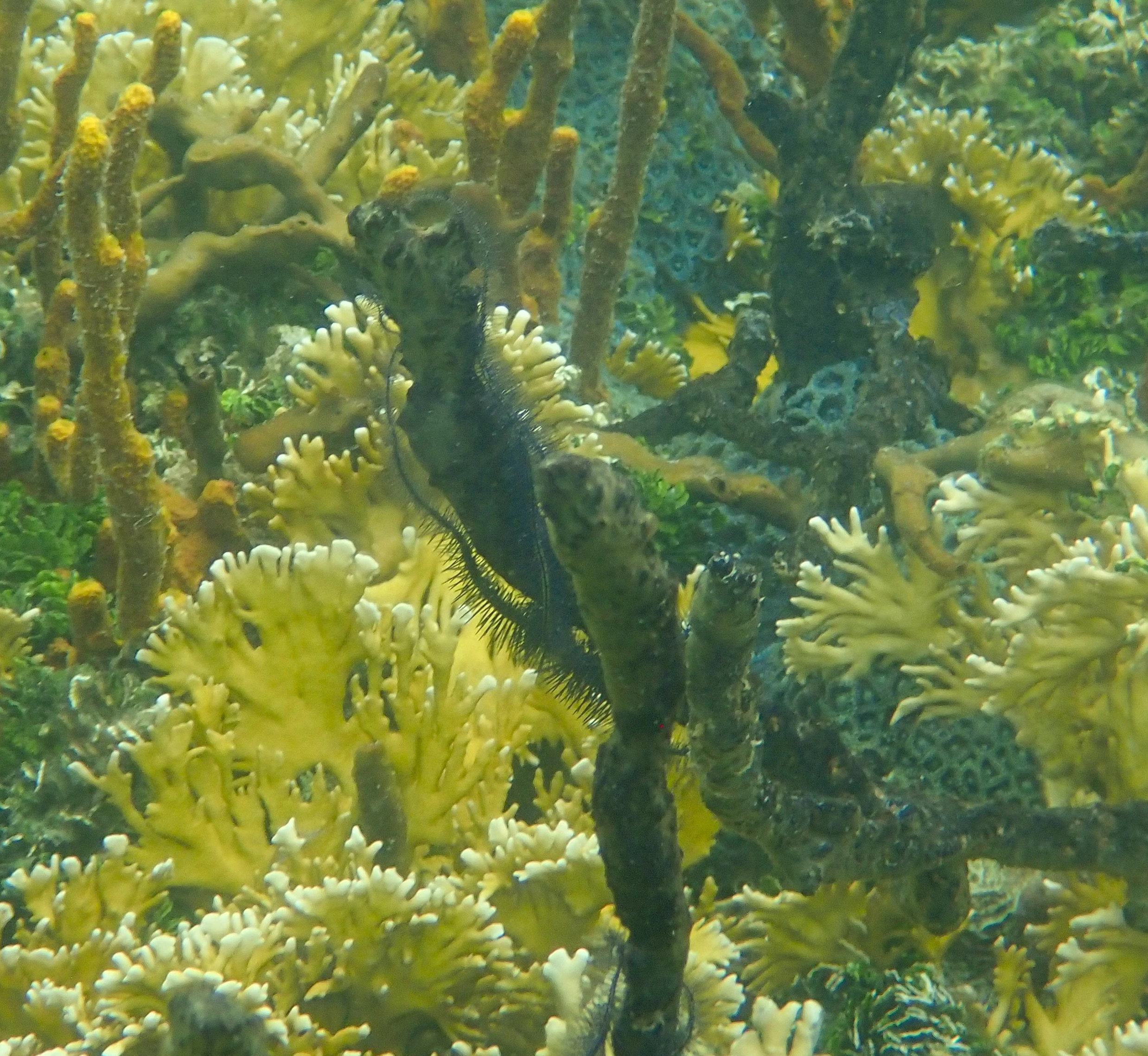
Tube worm fan (left) and coral community with black brittle star on pillar sponge (right). (c) C Braungardt 2024.
The diversity of coral reefs in lagoons and barriers at Bocas del Toro attracts many divers and snorkelling groups and the marine biologist Carolyn Kovacs is engaging the local community and tourists in outreach to explain the coral ecosystem functioning and threats: Microscopic algae (zooxanthellae) live within the colony of coral polyps (which are animals) to provide glucose from photosynthesis in return for shelter and nutrients. When corals get stressed from high temperatures or low oxygen levels in the water, the zooxanthellae are ‘kicked out’ and corals loose their colour, giving them a bleached appearance. If the stress abates within a few weeks, the microscopic algae can once again recolonise and the coral can recover. However, after prolonged periods without zooxanthellae, coral will die.
These processes affect corals world-wide and what I personally take away from my three hour long blowing bubbles in shallow water is a sense of deep joy at the diversity of an ecosystem I know very little about, a curiosity to find out more and a desire to become a better advocate for coral conservation, which is intimately linked with the prevention of nutrient pollution and global climate warming.
Featured Image: Coral Community at Bocas Del Toro, Panama. (c) C Braungardt 2024

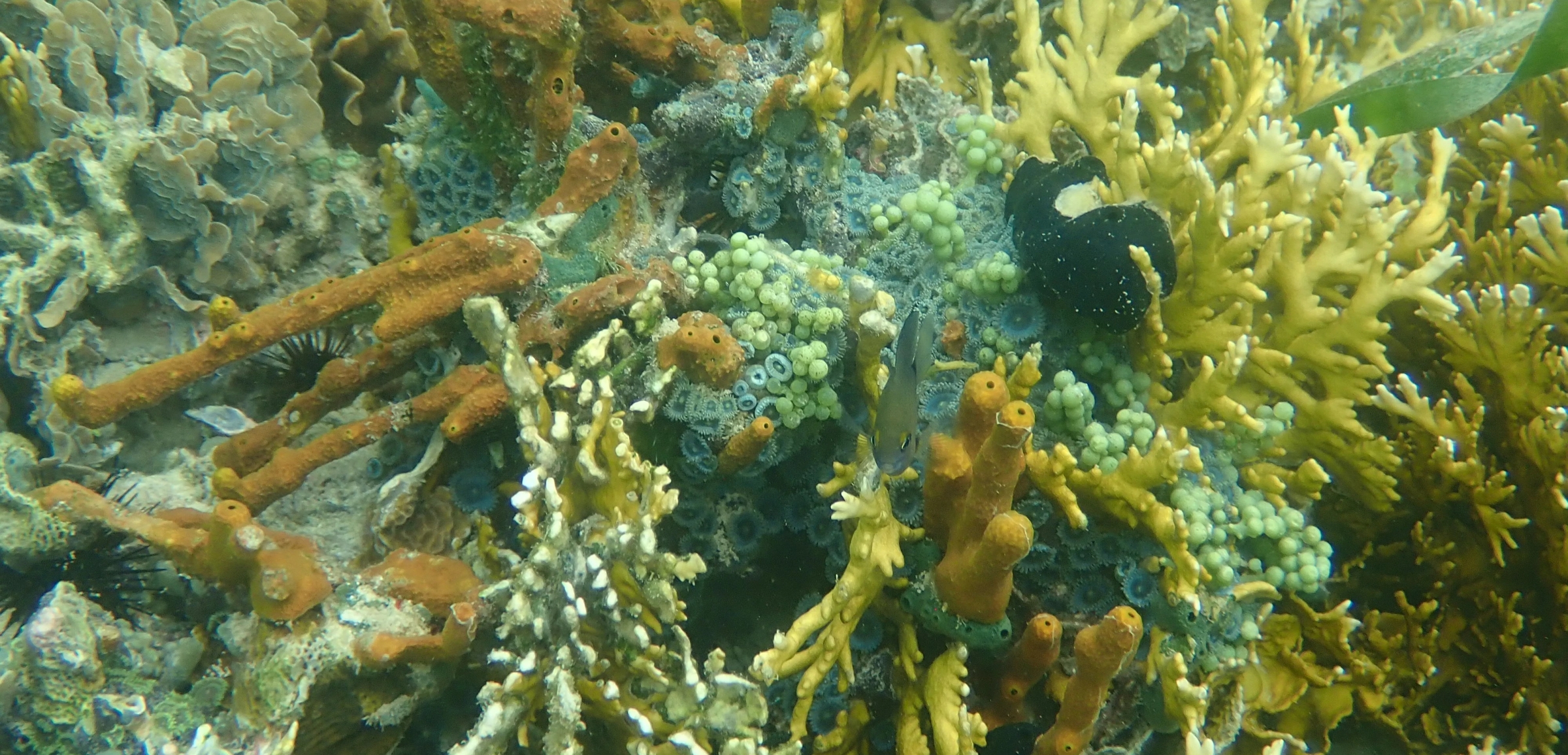
Pingback: My Bare Feet on the Earth | Challenging Habitat